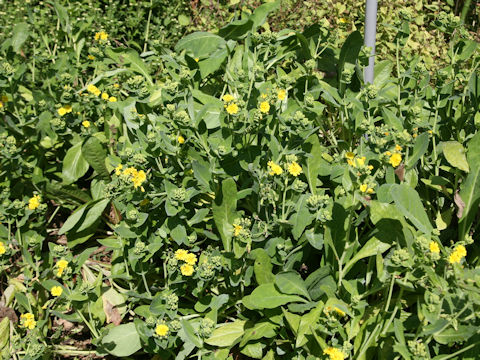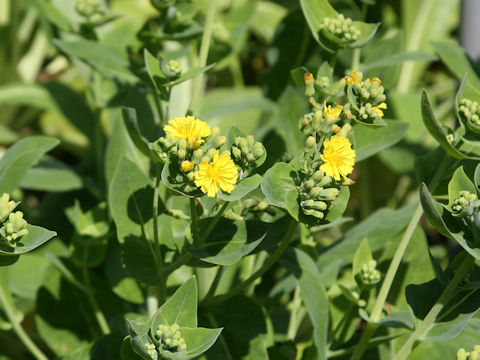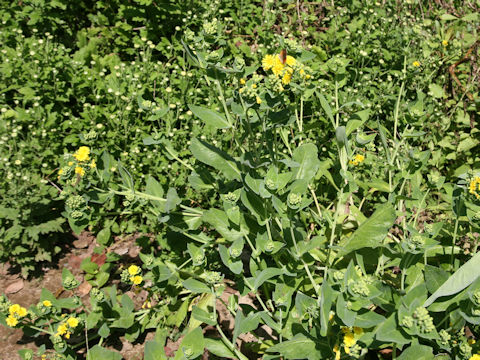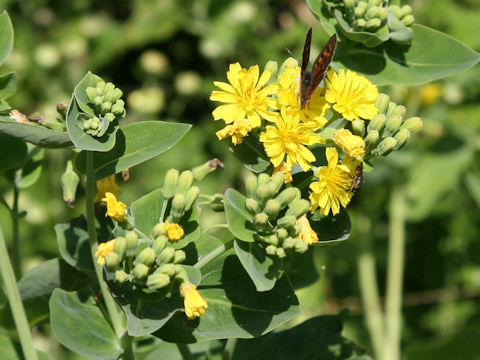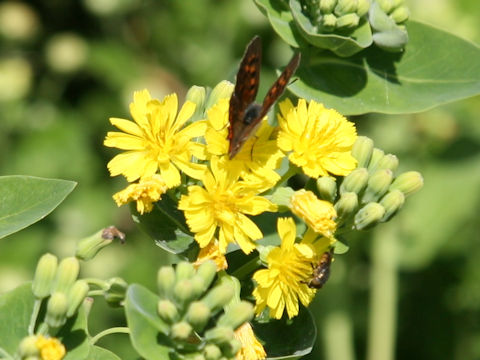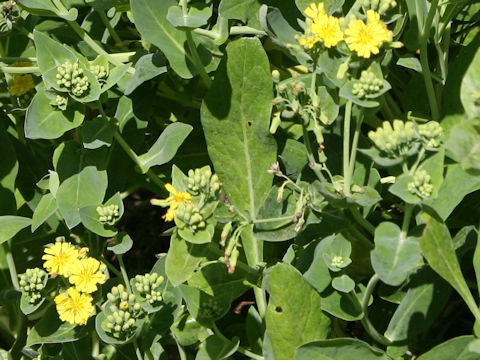
|
The "Hosoba-wadan" (Crepidiastrum lanceolatum) belongs to Asteraceae (the Aster family). It is a perennial herb that is distributed to Shimane Prefecture and Yamaguchi Prefecture, Shikoku, Kyushu, the Nansei Islands in Japan, as well as Taiwan and the Philippines. It grows on rocky shores and gravelly areas, and is 20 to 30 cm tall. The stem is thick and short, and branches from the base. The leaves are spatulate-elliptic to linear-lanceolate, and basal. In October and November, side branches grow from the leaf axils of the basal leaves, and yellow flower heads bloom at the top of the stem. The flower head is 10-15 mm in diameter, with around 12 ray florets. The fruit is an achene with white pappus. In Okinawa, this unique bitterness has long been favored, and it is used as a vegetable under the names "nigana" and "njana". In Taiwanese, it is called "細葉假黃鵪菜".
|
